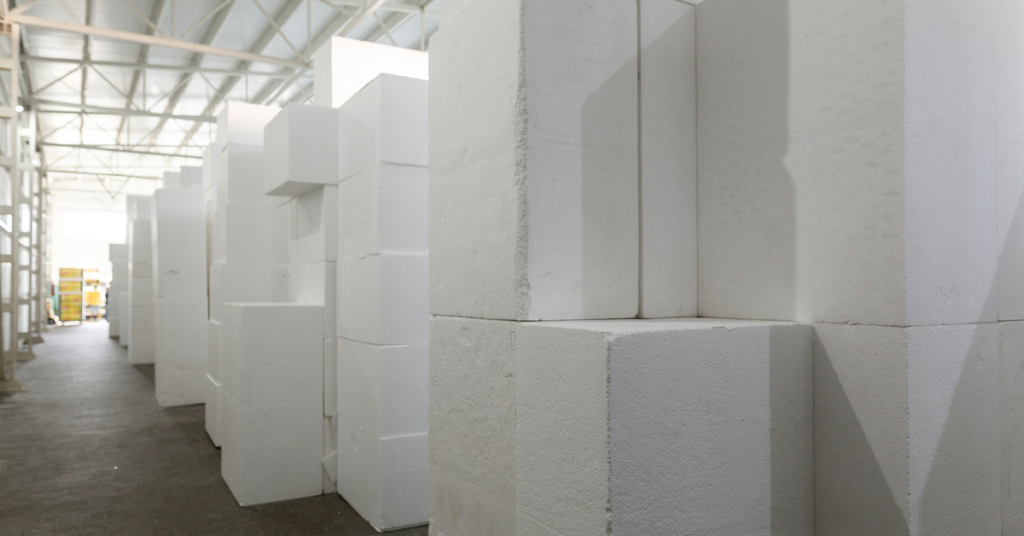Packaging is a critical component of any business, and it has been changing rapidly over time. Packaging must meet the needs of both companies and consumers – companies need products to be attractive and cost-effective, while consumers want convenience and sustainability in their packaging.
Packages have evolved from being an afterthought to a critical part of the customer experience. Let’s take a look at some of our predictions on what packaging might look like in 2022!
Sustainability
One of the first trends we want to look at, and one that is important to us at Sterling is more sustainable packaging or packaging that is easily recyclable. Packages should be created in a way that allows for easy recycling. Packages made from recycled materials will also become even more common, and some companies may even begin to offer cashback on packaging returned to their facilities.
Packages should always have clear instructions or labels about how best to dispose of them after their initial use. Packages should never contain information only pertaining to one form of disposals such as recycling when other options might exist like bio-degradable composting bins at home or community drop-off locations where consumers are more than welcome to dispose of their waste materials without contributing to unnecessary landfills.
Not only is this becoming increasingly important for consumers but also for many packaging manufacturers as well. Packaging is a large part of their revenue. If they want to stay in the market, they may need to adapt and create more sustainable packaging or recycled materials that can easily be turned into new materials.
Virtual Reality
One of the hottest trends we have seen in 2021, and we expect to continue to grow through 2022, involves virtual reality packaging applications. Major brands such as Pizza Hut and even beverage companies like 19 Crimes wine have jumped on this trend and applied VR to their packaging.
Packaging that can virtually transport you into a scene will be an intriguing trend for consumers. Packaging is often dull, but with this technology, retailers can create more of an emotional connection with customers making the unboxing process more of an experience.
Unboxings
The consumer experience is an important one which is why packaging designed not just for product protection but the entire consumer experience overall will make an even bigger splash in 2022. Brands have been leaning more towards packaging that is more luxurious and minimalistic. Gone are the days of simply shipping an item in a box.
For luxury items, the packaging plays a large role as well. For example, a high-quality bottle of wine or scotch will not just be shipped in a plain box, but the unboxing process is becoming increasingly important. As influencers gain even more popularity, they often show the whole unboxing process and tip their hat to brands that put time and effort into the unboxing look, feel, and experience.
Packaging Detail Information
As new packaging materials continue to be developed, companies will have better options in how they package their products and what types of materials can be found within these packages. For instance, there has been a lot of talk about smart packaging making an appearance which means that this technology would enable anyone who scans specific product codes on the outside or inside packaging could receive information regarding ingredients or content before even opening the actual product.
This also increases accountability around food safety as well since consumers can identify if any allergens were included in the manufacturing process before the purchase date by scanning QR codes.
Expanded Polystyrene
Another major packaging trend we expect to see developing in 2022 involves expanded foam packaging solutions. Packages such as protective gear and military equipment have used Expanded Polystyrene (EPS) foam insulation because it is lightweight, effective at protecting items from damage due to shock or vibration during shipping.
This type of material for packaging has gone through a lot of changes and advancements over time, but its popularity still remains high due to its ability to protect products. We don’t see this trend slowing down anytime soon. The quality characteristics EPS provides allow these types of materials to be used in everything from protective cases for computers and electronic devices and containers that house food items like meat, produce, seafood, etc.
EPS foam also offers significant savings when compared against other types of materials like paperboard boxes which require additional packing supports outside the box itself. This means less material used overall which means lower costs associated with transporting goods across long distances globally via air freight and better protection.
Bioplastic
In addition to even more EPS packaging technology making an even stronger appearance in 2022, there will also be continued growth in regards to bioplastic. Bioplastic packaging serves as an alternative to traditional plastics made from petroleum. Packaging materials like this are not only more sustainable than those currently in use, but they can be better tailored towards specific applications based on their molecular makeup.
For example, these types of packaging might have a higher degree of transparency or emit fewer gases that could damage products during storage/transit times. According to industryresearch.biz the global bioplastic packaging market was valued at 3.29 Million in 2020 and is expected to grow by almost 5% by 2027.
Polyurethane Foam
While polyurethane foam has been used since the 1950s, a lot has changed and developed since then. Packaging manufacturers are now using this material in new ways to create packaging that can hold an impact without shattering or cracking.
Packages made from polyurethane foam may look similar to those manufactured with EPS, but they have greater strength and durability thanks to how they combine these materials. Overall the rigid foam market is projected by MarketWatch to reach 99.78 Billion at a compounded annual growth rate of 8.2% from 2017 to 2022.
The packaging industry is ever-evolving and growing every day. Packages used to be limited to paper and cardboard and now we see a lot of recycling and alternative materials being used. Packaging has become increasingly important for retailers and consumers alike. Packaging manufacturers are using new materials like EPS, XPS foam, or even honeycomb cores for their packaging needs all the while still creating packages that are appealing, interesting all while keeping sustainable practices in mind.
The role of packaging has changed over time yet it continues to serve its primary function by protecting products transported across state lines or around the globe.



Exciting packaging trends, aren’t they? People are increasingly becoming aware of the need for sustainable solutions. In fact, even customers choose brands based on their ESG initiatives these days. So, sustainable packaging is likely to be a prominent trend going forward too.